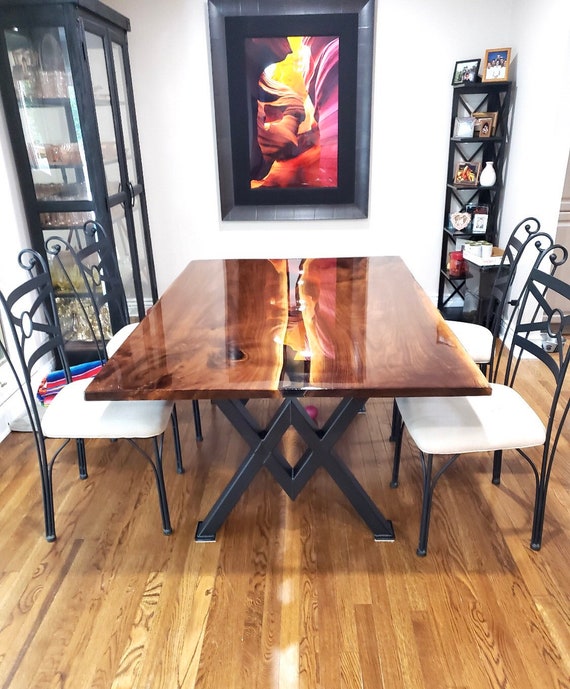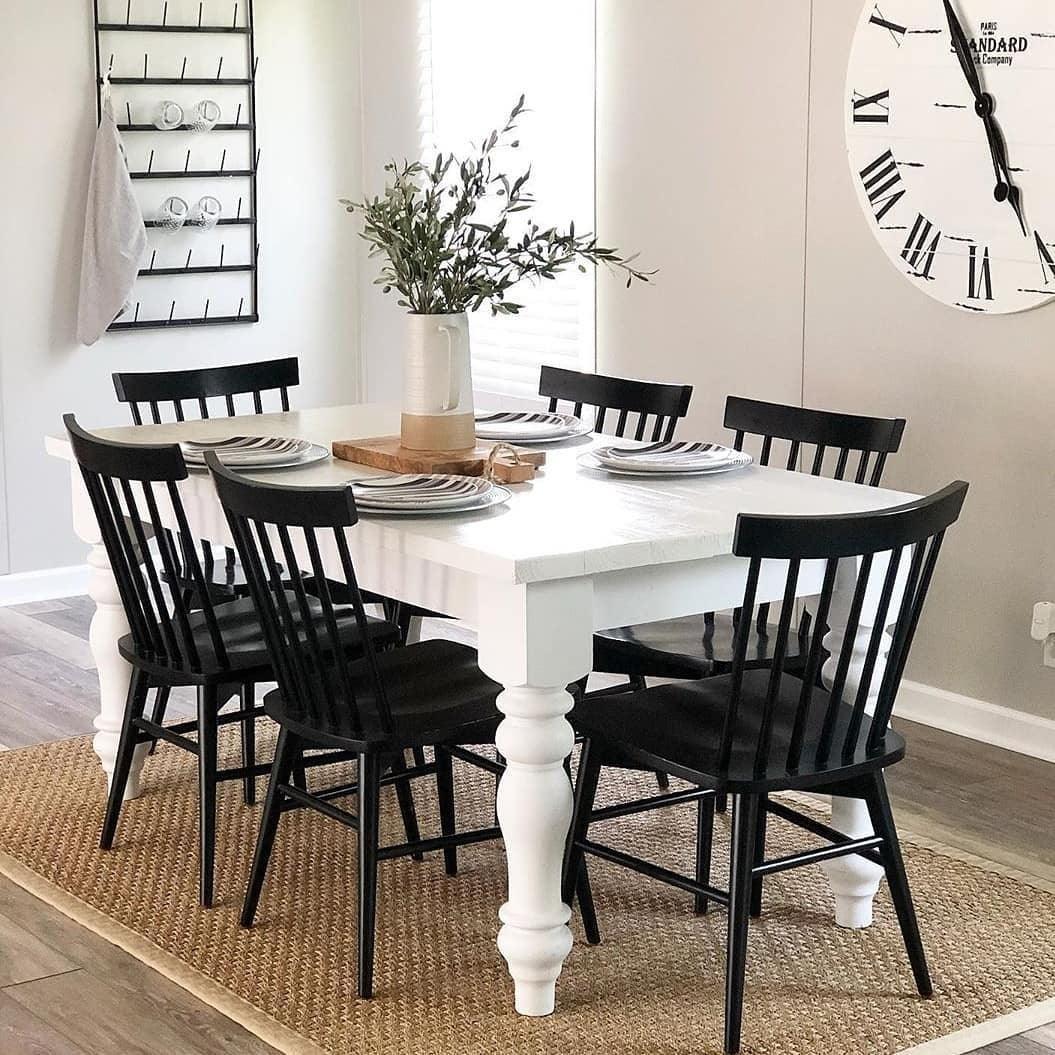How to Choose the Perfect Dining Area Table Legs for Your Home Decoration
Picking the perfect dining area table legs is a nuanced process that requires mindful consideration of different aspects, including your area restrictions, visual preferences, and sensible demands. The interaction between designs, materials, and dimensions can substantially influence the ambiance of your dining location, making it crucial to approach this choice systematically.
Assess Your Dining Room
Examining your dining area is important for selecting the right table legs that enhance both aesthetics and capability. Begin by gauging the measurements of your eating area, consisting of ceiling elevation, floor room, and proximity to other furnishings. This info will assist identify the suitable size and elevation of your table, which straight influences the choice of table legs.
Next, consider the design and format of your eating area. An open-concept layout might benefit from table legs that use aesthetic lightness, such as slender steel or acrylic options. Conversely, a much more traditional setting could ask for tough wood legs that provide a sense of durability.
Evaluate the existing color combination and materials in your dining area. Integrating the table legs with these elements creates a cohesive look that improves the total design. In addition, assume about the functionality required in your space. If you often hold huge events, consider legs that give additional assistance and stability.
Inevitably, a thorough assessment of your eating space will certainly lead you in making an educated choice, making certain that your table legs not just improve the visual appeal but also serve useful purposes.
Consider Your Design Preferences
When picking eating space table legs, it is vital to show on your individual design choices, as they considerably influence the overall visual of your dining space. Your selection of table legs can either complement or comparison with existing design, making it critical to straighten them with your recommended interior design theme.
If your home leans in the direction of a modern aesthetic, take into consideration sleek metal or minimalist wooden legs that provide a tidy, clean look. For an extra conventional strategy, luxuriant wood legs with detailed makings can add a touch of style and elegance. Industrial styles gain from durable, resources such as recovered timber and metal mixes, reflecting a tough appeal.
Additionally, farmhouse and rustic designs frequently prefer durable, beefy legs that evoke a feeling of warmth and comfort. Alternatively, if your décor is diverse, you might pick unique forms or a mix of materials to produce visual passion.

Evaluate Product Options
The selection of product for dining space table legs plays a crucial role in both toughness and visual charm. Typical products include wood, metal, and composite choices, each offering distinctive characteristics that can affect the total appearance and longevity of your table.
Wood is a classic option, understood for its heat and adaptability. Woods like oak and walnut offer exceptional stamina and can be completed in numerous spots to match any type of design. Softwoods like want are more vulnerable to scratches and damages, making them much less excellent for high-traffic locations.
Steel legs, typically crafted from steel or aluminum, radiate modernity and commercial beauty. They are resistant and highly sturdy to use, making them ideal for family members with youngsters or regular events (dining room table legs). Additionally, steel can be completed in different shades, improving the customization opportunities
Composite products, such as MDF or laminate, deal price and diverse layouts. While typically much less long lasting than solid timber or steel, they can still provide a fashionable look and are often simple click resources to maintain.
Ultimately, the material you choose should line up with your lifestyle, visual choices, and the degree of use your table will certainly experience.
Determine Height and Dimension
Picking the proper height and dimension for your dining-room table is crucial for both performance and convenience. The common height for dining tables typically varies from 28 to 30 inches, allowing adequate legroom for most people when seated. It is important to think about the dimensions of your eating area and the kinds of chairs you plan to utilize.

Additionally, take into consideration the percentages of your dining-room. A larger table in a roomy area can produce a grand atmosphere, while a smaller sized table functions well in even more intimate setups. Inevitably, the best height and size will certainly integrate with your total decor and read the full info here enhance the dining experience for you and your visitors.
Explore Personalization Possibilities

Furthermore, the design of the legs can be customized to fit numerous styles, such as rustic, modern, or commercial. As an example, tapered legs can evoke a mid-century modern-day feel, while beefy, block-style legs might reverberate with conventional or farmhouse design.
Property owners can additionally check out shade surfaces, from all-natural wood stains to paint, allowing them to match or contrast with the tabletop and bordering decor.
Furthermore, leg height can be gotten used to suit specific seating plans or personal preferences, enhancing both convenience and capability.
Finally, unique decorations, such as carvings or ornamental brackets, can better personalize the table legs, making the eating experience not just a meal yet a statement piece in the home. By considering these personalization alternatives, property owners can produce a dining-room table that genuinely reflects their uniqueness.
Verdict
Choosing the ideal dining-room table legs calls for careful factor to consider of different factors, including the measurements of the eating space, style choices, product toughness, and desired elevation. Personalization options even more find more info improve the capacity to attain a cohesive aesthetic that complements the general decoration. By methodically reviewing these aspects, home owners can guarantee that the chosen table legs not only fulfill functional demands however likewise contribute positively to the dining experience and atmosphere of the home.
Choosing the suitable eating space table legs is a nuanced process that needs cautious consideration of numerous aspects, including your space restrictions, aesthetic preferences, and useful requirements.Examining your dining area is important for choosing the right table legs that match both looks and performance.When figuring out size, measure the location where the table will certainly be positioned to guarantee it fits easily, permitting for at least 36 inches of clearance around the table for easy motion. A larger table in a spacious area can create a grand ambiance, while a smaller sized table functions well in more intimate settings.Choosing the suitable dining room table legs calls for cautious consideration of numerous aspects, including the dimensions of the eating room, style choices, product resilience, and desired height.